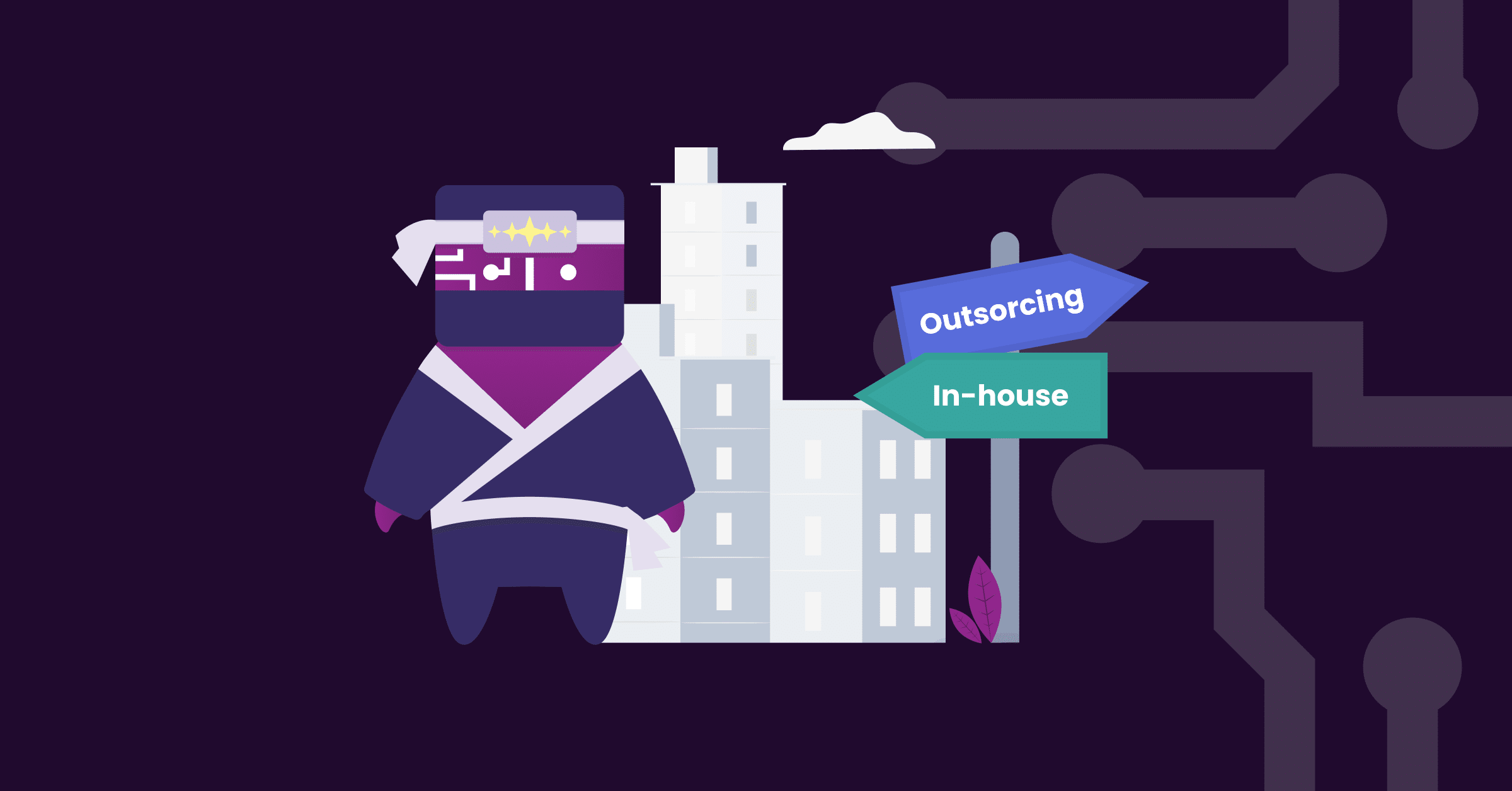It’s the David & Goliath battle of the customer service world: in house vs outsourcing. Whether you’re working in a service-oriented startup or a product-based enterprise this topic for debate transcends the entire industry. Whilst there are many in support of outsourcing and just as many for an in house approach, the question still remains: Which is the right way to go?
To be brutally honest, it depends. Don’t worry, ill expand a bit more than that 😉 It depends on what you’re hoping to achieve. Are you looking to cut costs, speed up personal touch and focus more on the people?
That’s not to say you can’t have both, but just like any great debate we must first look at the pros and cons of each option:
In house Customer Service
In house customer service is exactly what it sounds like. Customer service operated from within a company. Simple as that. Let’s take a look at why many companies think this is the only way to go… and why many don’t.
Pros
- Personal Touch- Perhaps one of the greatest benefits of keeping your customer service in-house is the fact that your team are solely dedicated to the product/service your company offers. Agents are more likely to become strong brand ambassadors and create a personal connection with your brand. This shows when it comes to customer interactions. Agents can offer a more personal approach and a deeper knowledge of your product/service.
- Consistency- It’s no secret that when it comes to keeping customers happy, providing a consistent level and style of communication is key. Keeping your team in-house ensures they receive similar training and are a part of the company culture. This guarantees they provide the service one usually expects when interacting with your company.
- Access to other teams within the company- Customer service is in no way an insular part of a company. On the contrary, it’s perhaps one of the most inter-departmental areas of any business. With constant updates and changes happening from the product or engineering team, it’s crucial that your customer service team is constantly in contact with these teams. This is to make sure they are able to communicate the most current information to customers. When your team is in-house, this is as simple as holding a weekly meeting, or getting up and walking over to your product manager and asking them a few questions.
Cons
- Cost- I’m not just talking about the fact that the wages you pay to agents in-house are significantly more expensive than outsourcing. This takes into account the entire process. From recruitment to onboarding, ongoing training, staff incentives, infrastructure, and the list goes on.
- Multitasking can be distracting- Whilst it is invaluable to have your team working closely with other departments, it can also take away from the productivity of their overall performance. This is especially obvious in startups. Whilst an outsourced agent’s only focus is tickets, an in house agent’s role may also involve updating content, liaising with the product team amongst other tasks.
- Scaling your support- There are three things that are certain in life: death, taxes, and scaling. Ok, maybe a little extreme, but you know what I mean. Your team is going to scale. With this comes a higher responsibility to be attentive with customers, often that means 24/7 service. With outsourced teams, you can use the follow-the-sun technique. However, in house, this means having people on the graveyard shifts. Which, unfortunately often leads to lowered motivation and productivity.
Outsourcing Customer Service
So what do I mean by customer service outsourcing? This refers to the business-model taken by many larger companies, whereby their customer interactions (or part of) are performed by an external organization. Here’s why/why not?
Pros
- Cost-Effectiveness- I’m sure you’ve heard this before, but that’s because it’s true. Studies prove that shifting your customer service operations overseas saves companies massively on labor and facility costs.
- It’s a numbers game- If you’ve ever worked in a call center you know what I’m talking about. With ambitious targets and high turnovers rates, many outsourced operations focus on KPI’s and gettin’ the job done. For lack of a better phrase. Nonetheless, this unwavering focus proves often to indeed, get the job done.
- Scalability- Scaling can make or break a customer service team. The option to outsource ensures that the cost and time that would normally be spent on recruitment, onboarding, and training can be handled outside your company.
Cons
- Again… It’s a numbers game- Whilst being data-driven and results-based is something we strongly support at Kaizo, it is not the be-all and end-all of customer service. Many outsourced operations focus too heavily on numerical goals, leaving things like quality of service and ‘being human’ to fall to the wayside.
- You’re not their only client- A common problem when externalizing your company’s customer service is that your agents are often not only working for you. This can cause problems in terms of a lack of brand loyalty and hindrance to their product knowledge.
- Loss of control- Whilst we live in an age where cross-continental communication is as easy as opening Skype, the lack of physical presence within your team can also mean the loss of control. This requires you to appoint an external partner who you trust to continue to provide the quality of service your company expects, without your physical presence.
So which approach is right for you?
As I often say, when it comes to customer service there is no holy grail. A single correct formula. Each company is different and should way up its options according to their mission and vision.
If you wish to go down the path of outsourcing, be sure to background check, track progress and remain as present as possible.
If an in house approach is more up your alley, make sure to keep your team’s product knowledge up to date and encourage a personalized touch in your service. In either case, the goal is customer satisfaction. So find the balance between efficiency and quality that works for your team and continuously evolve as you grow.



